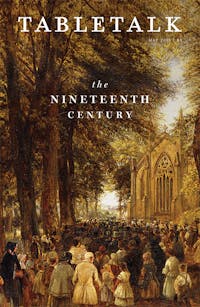
Request your free, three-month trial to Tabletalk magazine. You’ll receive the print issue monthly and gain immediate digital access to decades of archives. This trial is risk-free. No credit card required.
Try Tabletalk NowAlready receive Tabletalk magazine every month?
Verify your email address to gain unlimited access.
The nineteenth century witnessed the rise of theological liberalism in the Protestant church. It wasn’t new. It was an old liberalism repackaged with attractive branding and a clever marketing strategy, and the Enlightenment of the seventeenth and eighteenth centuries laid the perfect foundation. The Enlightenment viewed reason and empirical evidence as the primary way to construct a comprehensive system of all things pertaining to scientific and religious knowledge, as well as a way to understand ethics, government, and aesthetics, providing man with the supposed ability to obtain objective truth about reality. The Enlightenment was heralded as the “Age of Reason,” as opposed to the “Age of Faith.” Theological liberalism was simply the Enlightenment applied to theology, and so it was the obvious child of the Enlightenment.
At its core, theological liberalism did not confess a particular creed. That is to say, in its essence, it did not adhere to an identifiable, unified system of doctrine. Rather, it was developed as a method of doing theology—a hermeneutic, so to speak. Like the hermeneutic of the Enlightenment, the hermeneutic of theological liberalism sought to question everything and hold in suspicion all traditional, external authorities and establish new, objective conclusions based solely upon empirical, scientific data in accordance with human reason and not upon faith in God, the Word of God, and the historic creeds of the church. Inquiry to find the truth, apart from faith in divinely revealed truth, was the way of nineteenth-century theological liberalism, and it is the way of twenty-first-century liberalism.
In his classic 1923 work Christianity and Liberalism, J. Gresham Machen wrote: “What is the relation between Christianity and modern culture; may Christianity be maintained in a scientific age? It is this problem which modern liberalism attempts to solve.” Theological liberalism takes its cues from the world. It is driven by what man must do, what man must attain, and what man must determine—not what God has done, what God has accomplished, and what God has revealed. The motto of theological liberalism, then and now, is “Christianity must adapt or die.” At its core, theological liberalism possesses a deep craving to be relevant to the culture, adored by the world, and respected among the intellectual elite. And although its adherants would never admit it, the warp and woof of theological liberalism is, “Truth if possible, but peace, relevance, and worldly influence at all costs.”
